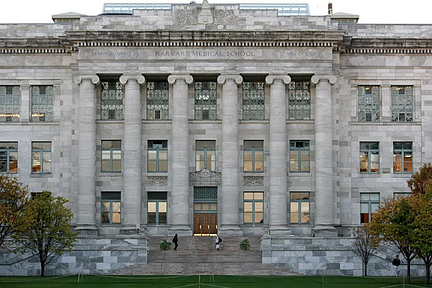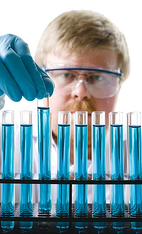Harvard Medical School is a funding and research mecca that attracts millions of dollars in grants every year.

(Image courtesy of Németh Dezső and Wikimedia Commons)
The Harvard Medical School is having a blockbuster year when it comes to new research breakthroughs and new research funding. In 2011, Harvard had a total operating budget of $655 million, with research grants and contracts contributing 34%, or $304 million. Each year, the NIH awards a significant portion of its research funding to Harvard Medical School. In 2011, Harvard received $200 million in NIH research grants, which is two-thirds of its 2011 research and grant budget.
Christmas came early for Harvard researchers when the NIH awarded the Medical School $202 million. This represents a gain of more than $2 million from the previous year. With an infusion of NIH money, Harvard scientists were able to work on 428 new and current projects in 2012.
 |
 |
NIH grants help keep Harvard Medical School working up to its potential, with its large medical faculty numbering almost 12,000 people. Each day, faculty are busy training the next generation of doctors and researchers, with more than 9,376 residents and postdoctoral fellows learning and working at Harvard. The future looks bright due to Harvard's medical faculty constantly improving our health knowledge through its frequent research breakthroughs.
Researchers at Harvard have discovered new ways to fight obesity, conduct lung tissue research and encode information in DNA.
- The laboratory of Dr. George M. Church has found a new way to read a book. In his laboratory, a book was translated into binary code and then into 4 amino acids to be stored as DNA. To make sure the information was not harmed, they choose to store the information on a DNA chip rather than using a living organism. Using DNA to encode information could soon be a part of our future because DNA is a hardy, long-term storage device.
- Cell biologist Dr. Spiegelman and his colleagues at Harvard Medical School and Dana-Farber Cancer Institute have found a potential new treatment for obesity using the newly discovered hormone irisin. Irisin speeds up fat use by changing the fat in the human body from white fat to brown fat. Normally, irisin is produced when we exercise, and it might hold the key to helping people lose weight.
- Researchers at the Wyss Institute for Biologically Inspired Engineering at Harvard University have revolutionized how research in the future might be conducted without animal testing. The scientists have found a way to create an artificial lung on a chip that is partly mechanical, partly biological and simulates human lung functions. The new chip has already demonstrated its ability to fight bacteria using white blood cells in a way similar to real human lungs. In the future, it may be unnecessary to use animals for research, which could also make it possible to reduce research expenses.
 |
 |
| Courtesy of Horum | Courtesy of katehutson |
Harvard also looks at the funny side of science, as it recently hosted the Ig Nobel Prizes for 2012. The Ig Nobel Prize is given to fun, but absurd and improbable research projects. Some of the projects that won this year include research on the movement of hair in ponytails, the brain activity in dead salmon, how coffee sloshes while walking and using the smell of wasabi as an alarm.
We have provided a helpful link to more Science Market Update blogs on Harvard.

Biotechnology Calendar, Inc. will be at the Longwood Medical campus on February 21, 2013 for our 7th Annual Boston BioResearch Product Faire™ Event. With life science researchers from Harvard Medical, Dana-Farber, Joslin Diabetes, Children's Hospital, MGH and other institutions in the Longwood Medical neighborhood attending, this is an excellent opportunity for scientists and laboratory equipment suppliers to network and discuss their research needs and solutions.
Click below for information on exhibiting at Longwood Medical and receive a funding report on Harvard University:








